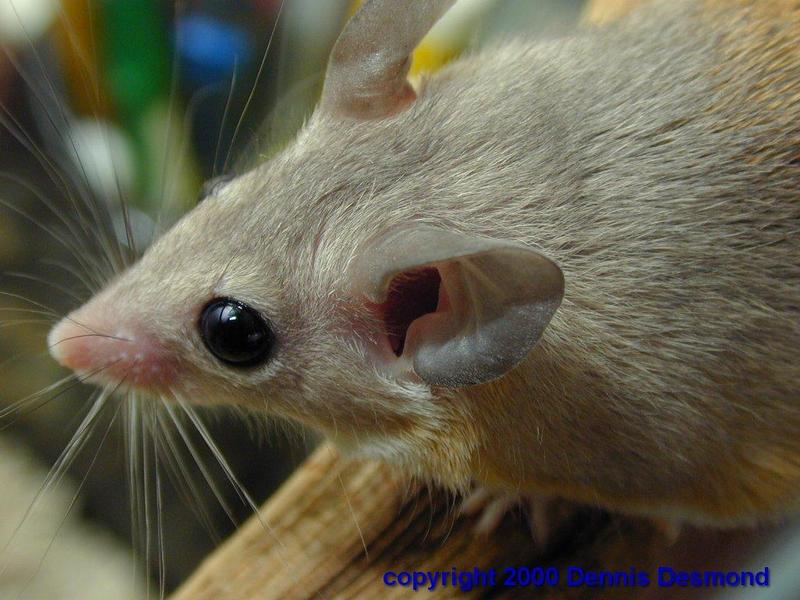Egyptian spiny mouse - ACOMYS CAHIRINUS
Class: Animals with Milk Glands (Mammalia)
Subclass: True Mammals (Eutheria)
Order: Gnawing Mammals (Rodentia)
Family: Muridae.
The Name "Mouse": "Mouse" comes from the Old English word "mus," for the animal.
Location: North Africa and the Middle East.
Habitat: Terrestrial. Rocky areas, sometimes with dense vegetation.
Description: The upper parts of the body are brown, gray, or beige; the lower parts and underside are always white. The ears are large, and the tail is hairless with large, conspicuous scales which are often split or broken. The coat has a bristly appearance because of the presence of a great many hard and spiny outer hairs. Length of head and body about 5 inches, tail the same. Weight is a little over three ounces
Behavior: The ecology of this gregarious mouse is similar to that of the house mouse, with which it competes for territory and sources of food. It prefers to eat plant matter, but adapts to anything edible. In desert and sandy areas it also competes with gerbils, and often uses their burrows. It is active early in the day and late in the afternoon and evening.
Reproduction: Gestation lasts six to seven weeks, and the young (two or three, but at most five) are born mainly in the spring and summer months. There are several litters each breeding season. The female has six nipples, and the male is sexually mature at the age of seven weeks. |
